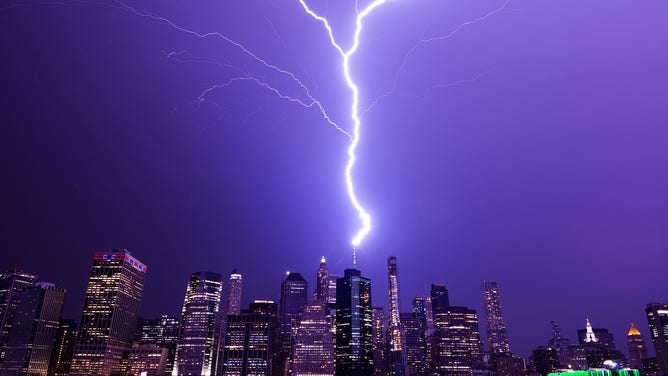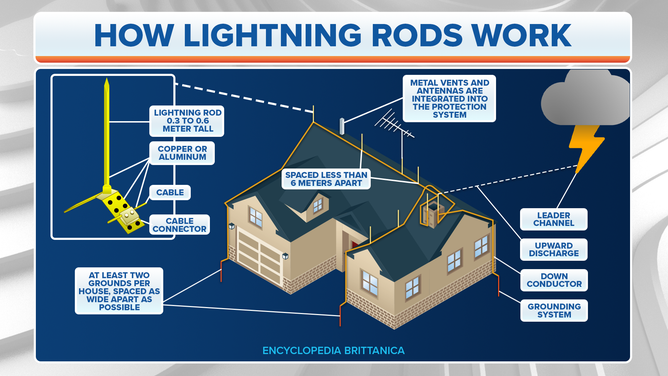How do lightning rods work to protect homes and buildings?
The rods stick atop the highest point of the building, aiming to attract the lightning bolt. Once the bolt strikes, the rod safely channels the millions of volts of energy through copper or aluminum cables around the home and into the ground.

Lightning strikes New York City's World Trade Center on Sept. 13, 2021.
(Christopher Scragg / FOX Weather)
One of meteorology's greatest myths is that lightning doesn't strike the same place twice. Some places like the Empire State Building get struck dozens of times a year (though one time it was hit eight times in 24 minutes, according to the City of New York and the National Weather Service.)
Unprotected buildings and homes can suffer various damage from lightning strikes, from fires to fried electronics. A typical lightning strike can carry 300 million volts and 30,000 amps. That’s enough energy to power a 100-watt incandescent light bulb for around three months, the National Weather Service says.
Lightning rods to the rescue. The rods stick atop the highest point of the building, aiming to attract the lightning bolt. Once the bolt strikes, the rod safely channels the millions of volts of energy through copper or aluminum cables around the home and into the ground, thereby protecting the house from the massive energy surge had the strike come in via wires or pipes.

(FOX Weather)
NWS forecasters also suggest electrical surge prevention devices for incoming power, data, phone lines and appliances for total protection. Some gas lines may also require lightning protection.
The NWS says that any lightning protection system should follow the national safety standards and requirements of the Lightning Protection Institute, National Fire Protection Association, and Underwriters Laboratories.
Of course, taller structures need more elaborate protection than just one lightning rod. According to a Space Needle spokesperson, the Space Needle in Seattle has 25 lightning rods atop its crown, including its spire perched 605 feet above the city.
Forecasters warn that lightning rods don't protect the building itself from being struck; they work to mitigate the impacts. And, of course, the thunder will still be quite loud!